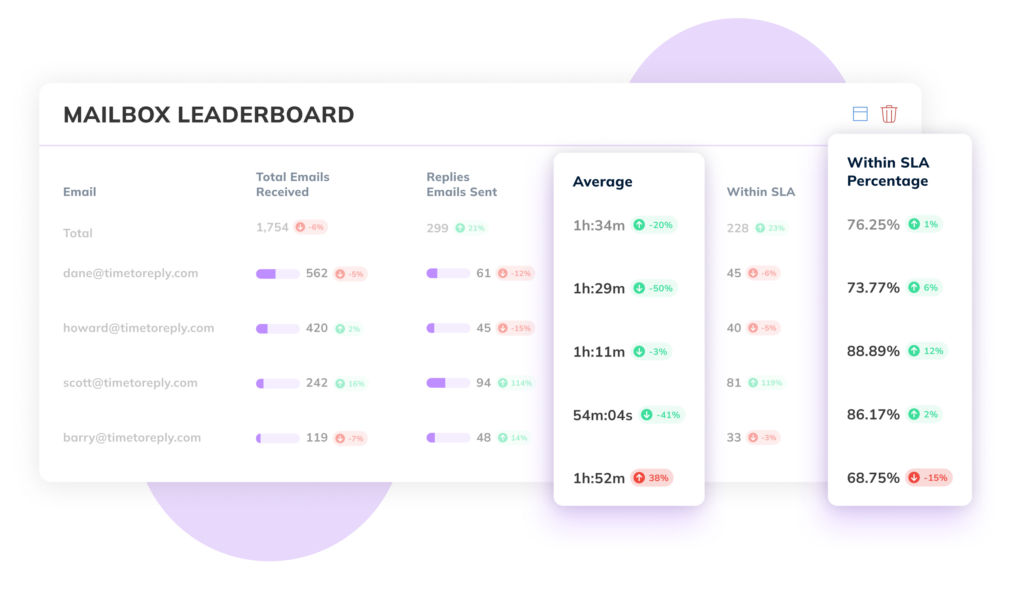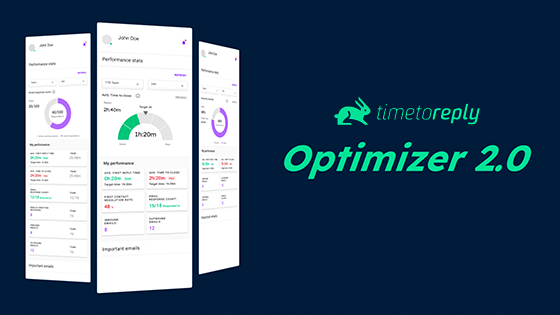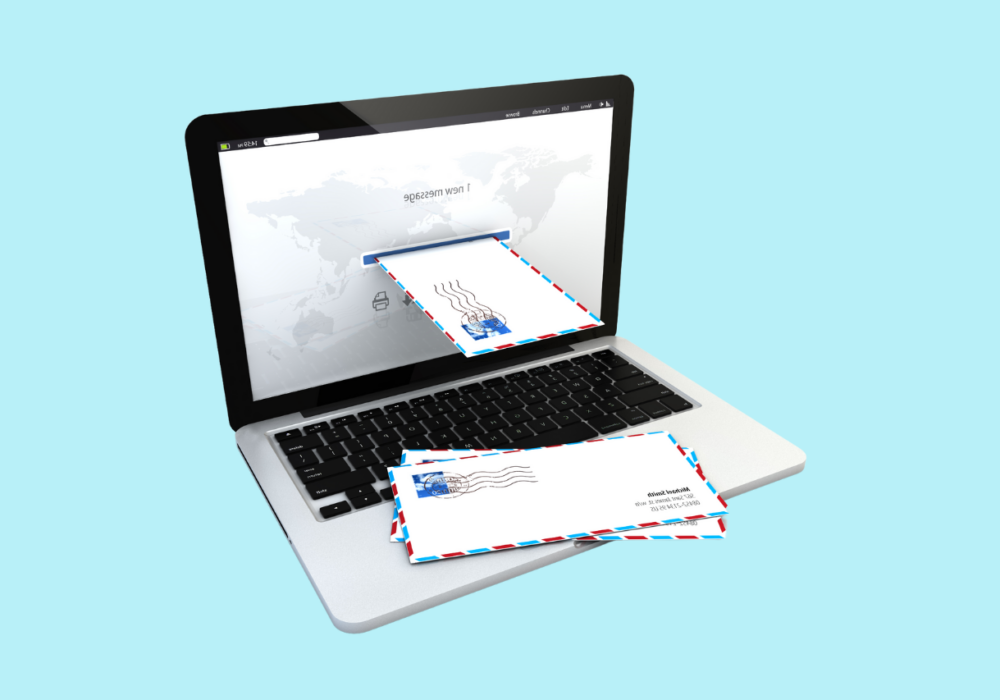A service level agreement helps set expectations and ensures that you and your clients are always on the same page.
In the long run, your customers will stick with you not just for your product or service, but for the high-level and consistent quality of customer service you’re providing them with.
Your SLAs are important as they help shape your team’s approach to customer service, and they’ll prepare your customers for what to expect when they work with you.
In this article, we’ll cover exactly what SLAs are, why they’re important for customer service, and show you practical examples of SLAs you can implement in your business.
Service Level Agreements, or SLAs for short, are agreements between vendors and customers that outline the type of service a customer will receive.
SLAs can be customer-facing, internal, or a combination of both. However, the main goal is that your SLAs ensure your customers know what to expect from your business and give your team a way to measure success.
Many SLAs will also include a way for your customers to get out of a contract or receive some kind of kickback if you don’t provide the level of service you promised.
SLAs are an excellent way to set goals and expectations for your customer service team.
As most SLAs are customer-facing (e.g., a SLA on the expected time to reply to urgent support tickets) there’s accountability built into them.
Your team will know exactly what is expected depending on the situation and customer they’re dealing with.
For example, an SLA that says all urgent support tickets will be responded to within an average of 1 hour doesn’t leave room for your team to miss that target.
When you set goals for your team, they’ll be based on real agreements with your customers, and not made-up metrics that don’t motivate your team.
Because your customer service SLAs are rules for real and specific business situations, they’re effective at keeping your team focused on the right activities.
Without SLAs, it’s easy for teams to end up focusing on the wrong issues and prioritizing non-urgent support requests simply because they’re at the top of your support inbox.
But, with SLAs in place, your support agents will know exactly what tickets and activities they need to prioritize in their workday.
At the end of each day and week, you’ll be confident that all of your customer agreements have been upheld and your team isn’t prioritizing the wrong tasks.
If you’ve ever closed a new client and then soon after realized they’re difficult to work with, you’ll be thankful to have SLAs in place.
For example, let’s say your SLA promises 1 hour reply time for urgent tickets, and 24 hour reply time for non-urgent tickets.
If a customer reaches out with a non-urgent request but then expresses unhappiness that you took 3 hours to reply, you can remind them of the agreed-upon SLAs that mean you actually replied within the expected timeframe.
Your customer service agents won’t feel the need to take the blame for issues, as they can always use your service level agreements to show customers that their level of support is up to the standards they were promised.
SLAs often feel like they benefit the customer more than your own team, but they can equally pay dividends for your own company if they protect your team from an unhappy customer.
Keeping your customers happy is key to business success.
Your SLAs will ensure you provide a stellar customer experience to every customer, leading them to extend their relationship with your business, and be happy to refer new clients to your business.
Internally, your team will know exactly what processes and best practices to follow in order to hit your SLAs, and no matter which support agent your customers talk to, they’ll get a consistent support experience that leaves them feeling great about choosing you as their vendor.
An important SLA if you want to excel at customer service is your average time to reply to tickets.
If customers know they’ll always get a reply within a specific length of time, they won’t be left worrying about whether or not you’ve seen their support ticket.
You can easily set your time to reply goals using timetoreply. Once you connect it with your support team’s email inboxes, you can set targets for your team to aspire to. For example, you can set first time to reply goals to help measure how quickly your agents respond to new tickets, or average ticket resolution time to track how long the average support ticket is open for.
You’ll see clear data showing your team’s reply times, helping you understand whether or not you’re on track to hit your SLAs. If there are peak times where your support team struggles to hit your expected reply times, you can use your data to address staffing shortages or improve your processes to get you back on track.
Your customers are paying for a service and expect you to solve their issues when they arise.
However, it’s also important to remember that your team has other projects and customers to take care of, and most issues can’t be solved instantly.
Setting SLAs that define the expected time to resolve issues is an important part of setting customer expectations.
For example, if a customer reaches out to you with a problem knowing that the average issue is completely resolved within 6 hours, they’ll be happy to sit back and let your team solve the problem, rather than pushing for instant resolution.
A common SLA for businesses in the software and IT industry is service availability and uptime. After all, if you’re paying for software and it has downtime that leads to it being unusable, you’ll feel like it’s money down the drain (and so will your customers).
Setting clear expectations for your expected uptime and availability ensures that when you track and report on it, customers know whether they’re receiving the service they were promised.
If you’re creating SLAs for a service business, you could set a certain number of hours per week that your team dedicates to a client account. It will help create clear expectations upfront and ensure you don’t have customers reaching out to your team every day for help on problems your team doesn’t have the availability to solve.
If your business serves customers mainly in one market or is still in the growth stage, it’s unlikely you have support agents in multiple time zones.
Implement SLAs to let customers know when your team is available. For example, if you know you can’t offer priority support between the hours of 12 – 5 AM, let customers know upfront. If not, there’s always a chance they’ll reach out during those hours looking for help and be left waiting.
Your customers won’t mind if you set limits on your support availability, as long as you’re clear about it upfront with them.
If you want to ensure you always hit your SLAs related to response time and support availability, timetoreply is for you.

Simply connect your team inboxes and timetoreply will pull in your existing data on your average reply times from individual and group mailboxes.
…
You’ll see actionable analytics that provide management with clarity into the performance of your customer-facing teams.
You can create new targets whenever you update your SLAs and then easily measure whether or not the targets are being hit in customized reports and dashboards.
timetoreply works with o365, Outlook, Gmail, MS Exchange, and IMAP, and you can get started in seconds. Schedule a demo now and discover how it can help you hit your SLAs and exceed customer expectations.



Trusted by high-performing inbound sales teams and customer-facing teams globally.
Close more deals and delight more customers with the faster, smarter, deeper email analytics and performance optimization software that works straight from your team’s inbox.